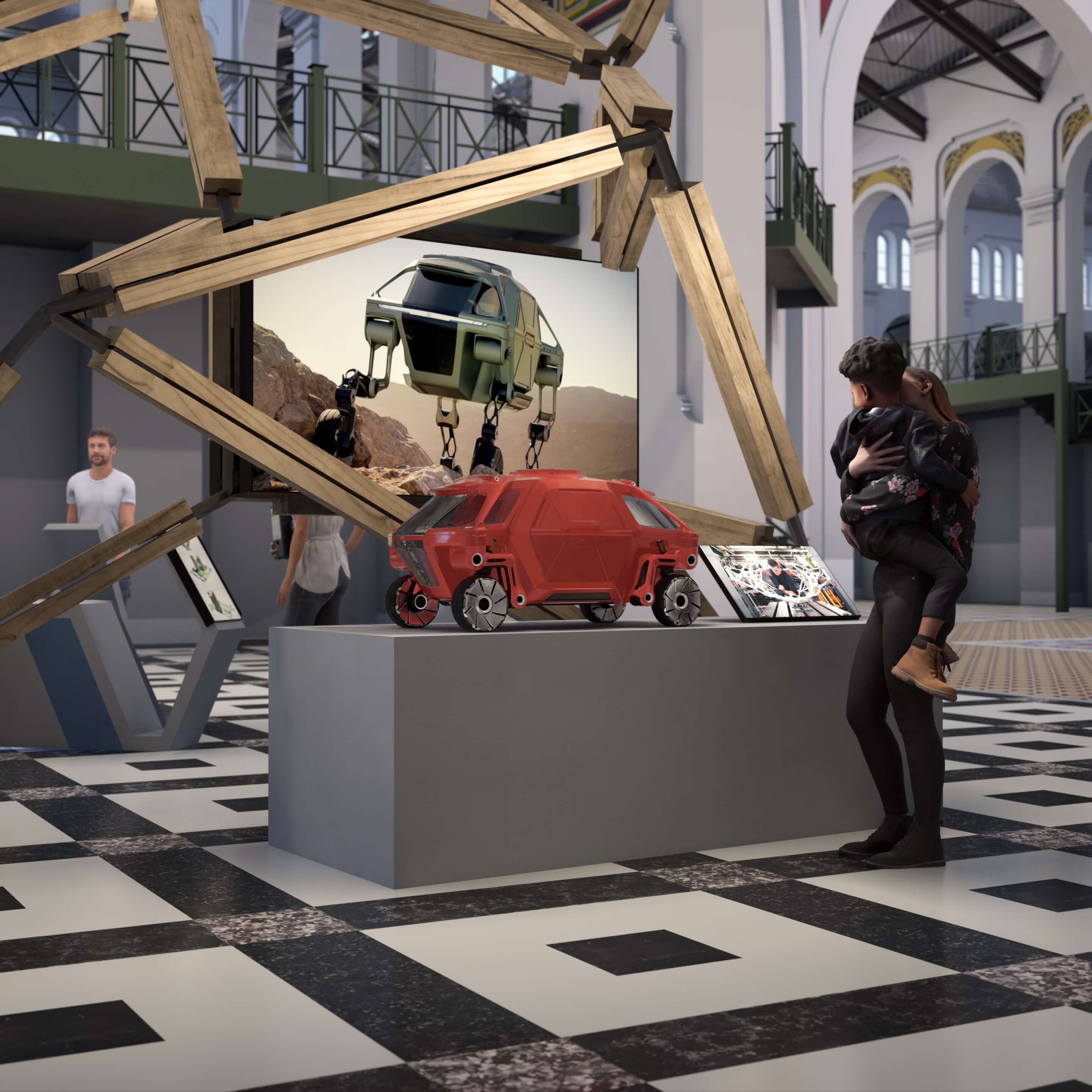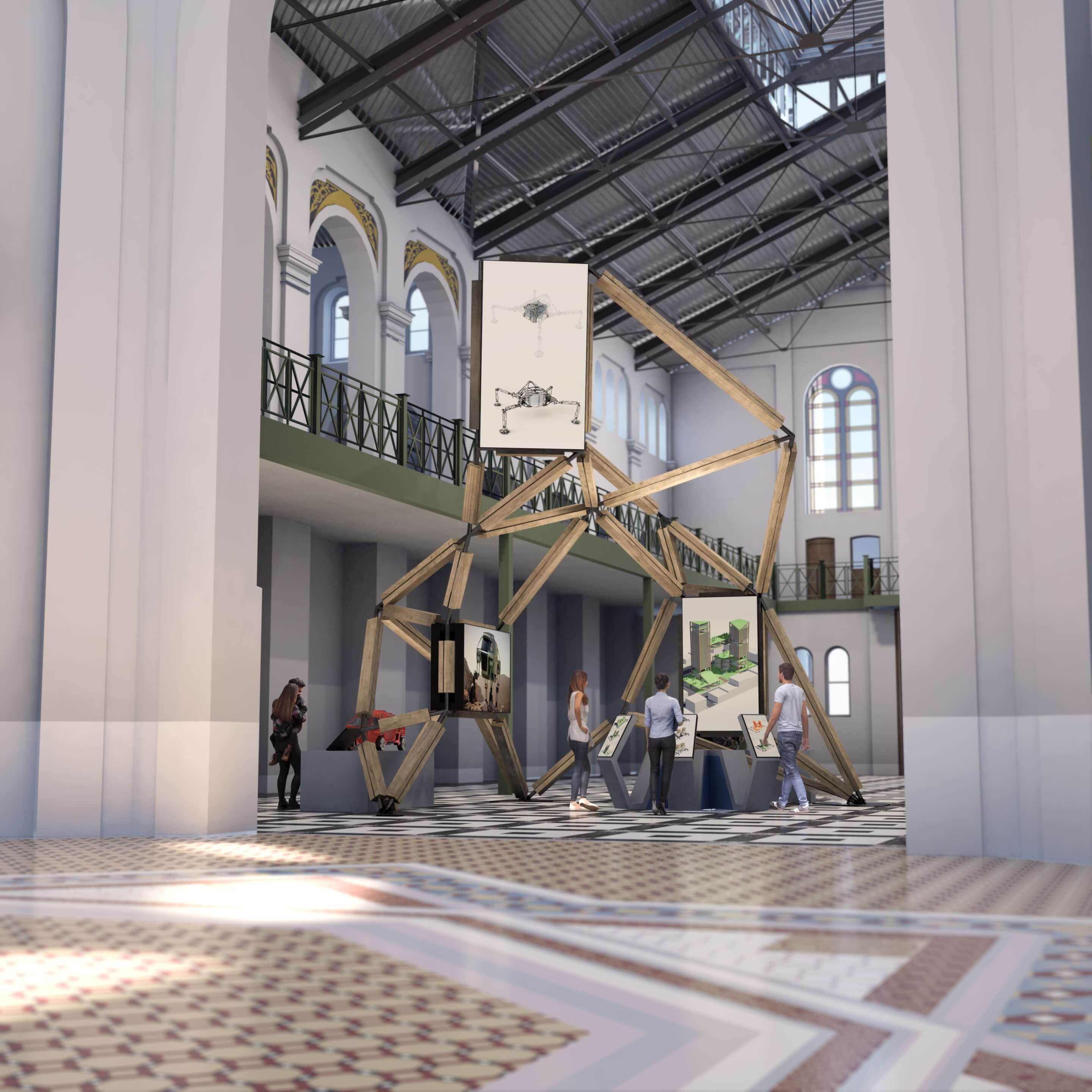In late February of this year, the Smithsonian Institution first revealed plans for FUTURES, a blockbuster exhibition-slash-festival of the future designed by David Rockwell that will span across four separate zones across the halls of the Smithsonian’s historic Arts & Industries Building (AIB) on the National Mall in Washington, D.C.
Time hasn’t been entirely too kind to the landmark 1881 brick museum building originally designed by Cluss & Schulze, which has been closed to the public since 2004 over structural concerns. The AIB, however, will temporarily reopen for the first time in nearly two decades to host FUTURES in celebration of the Smithsonian’s 175th anniversary. The exhibition kicks off in November of this year and runs through July 2022.
Now, the Smithsonian has announced a major component of FUTURES in the form of The Co-Lab, a first-of-its-kind collaborative design experience developed with Autodesk that invites exhibition guests to co-create their own city of the future. In designing what a news release calls “better, greener communities in real-time” with The Co-Lab, exhibition visitors will receive a crucial assist from a generative artificial intelligence acting as their all-purpose, in-house planning and design partner.
Aside from the AI-driven interactive element that will invite the public to play city builder for the day, The Co-Lab will also feature an installation, itself titled The Co-Lab, that takes the form of a 22-foot-tall “seemingly impossible cantilevered structure” within the AIB as a central feature of the Futures that Unite hall, one of the four aforementioned exhibition zones. (Focused on inclusivity and connectivity, the zone explores ways we can work together toward a shared future.)
Inspired by the ahead-of-their-time visions of Yona Friedman, Constant Nieuwenhuys, and Buckminster Fuller (particularly his 1946 Dymaxion House), the installation was generated with AI by The Living, an Autodesk Research Studio. As detailed in the release, AI generated ideas for The Co-Lab “beyond typical human design rules” while sticking within strict parameters established by Autodesk researchers in that it had to be lightweight but strong, easy to assemble and dissemble, and fit within a relatively small footprint.
The interactive city-building experience, titled Future Communities, will be located within The Co-Lab structure and truly puts the thematic thrust of the exhibition into real, palpable action. Given the opportunity to co-design a city block with friends, strangers, and, of course, AI, visitors will “be able to play as a different ‘persona’ with unique social, climate and economic goals and differing needs,” the Smithsonian explained.

“Behind the scenes, generative AI will drive the city block’s evolution in real time, evaluating thousands of solutions to competing needs. Visitors can debate, delight and work together, prompted by the insights and suggestions of the AI, to build skyscrapers and parks, improve community wellness, reduce carbon footprint and more. Over the run of FUTURES, visitors will collectively bring to life thousands of different ideal communities, each unique to the group who co-created that particular future.”
“FUTURES’ lets us explore new tools like generative design that have the power to supercharge human imagination and tackle increasingly complicated 21st-century problems,” added Brad MacDonald, director of creative media at AIB, in a statement. “What we’ve created with Autodesk will feel as engaging as a game, housed inside a stunning design spectacle. The ‘aha’ moment for visitors is that in the near future, we could actually be designing our cities and homes this way. It’s a participatory, collaborative process for design of almost anything.”

FUTURES is set to encompass 32,000 square feet of the flagship Smithsonian building, which, once upon a time, served as America’s so-called “Palace of Wonders,” an internationally renowned showcase of all things newfangled and futuristic: telephones, light bulbs, Apollo rockets, and so on. In addition to The Co-Lab, site-specific art installations, interactive exhibits, working environments, speculative designs, and “artifacts of the future,” along with objects pulled from 23 of the Smithsonian’s museums and research centers will populate the AIB’s historic halls during FUTURES. Art commissions, large-scale technology projects, a “cutting-edge mobile experience” from Goodby Silverstein & Partners, and a film project will also be announced throughout the year. As with all of D.C.’s Smithsonian museums, visiting the exhibition will be free. What’s more, this summer the Smithsonian will launch an interactive virtual FUTURES toolkit in advance of the exhibition opening.











